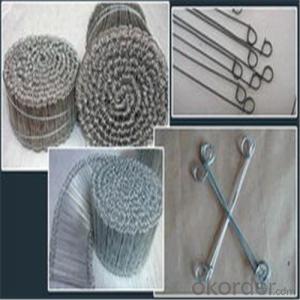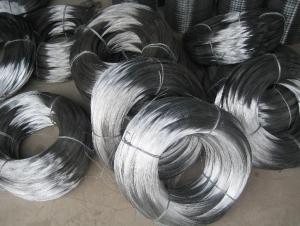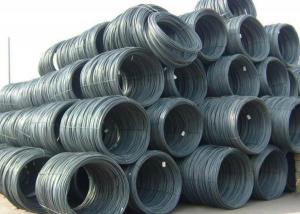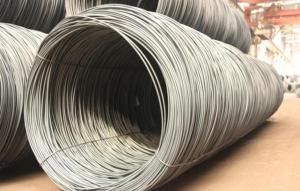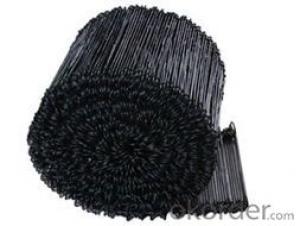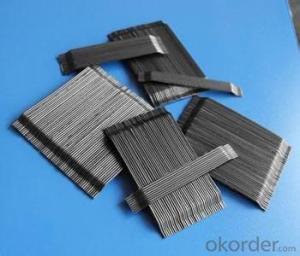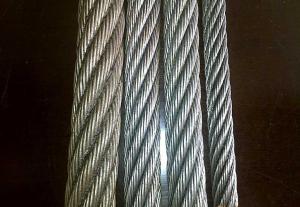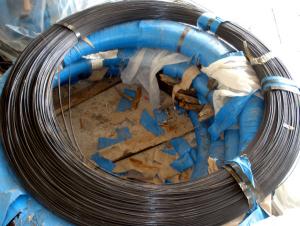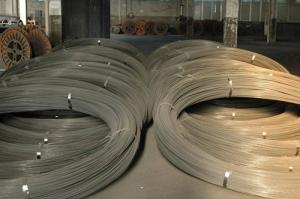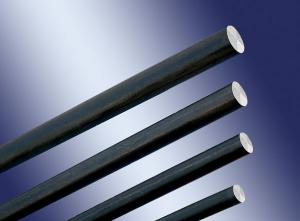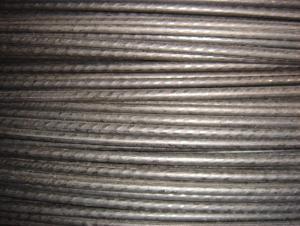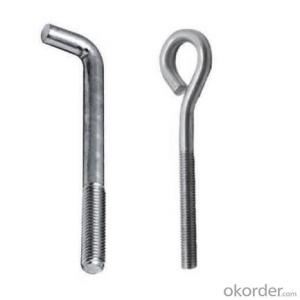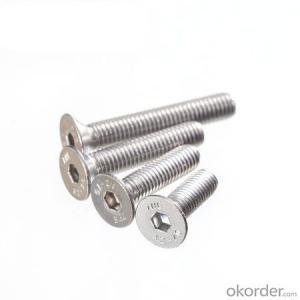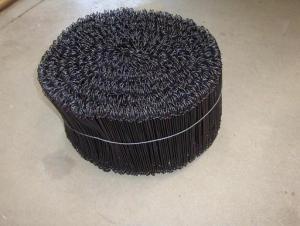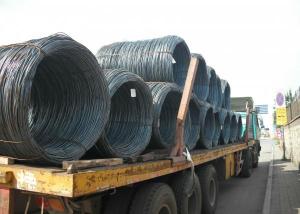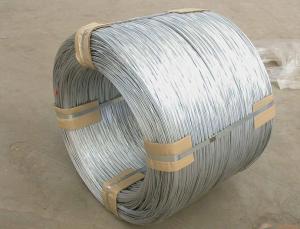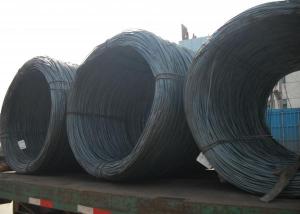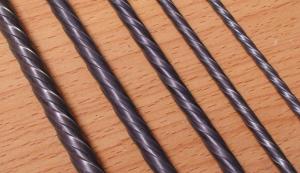Loop Tie Wire with Good Quality Factory Direct Lower Price Hot seller
- Loading Port:
- Shanghai
- Payment Terms:
- TT OR LC
- Min Order Qty:
- 5000 kg
- Supply Capability:
- 100000 kg/month
OKorder Service Pledge
OKorder Financial Service
You Might Also Like
1.Structure of Looped Tie Wire Description:
Loop tie wire is made of PVC Coated wire of Galvanized wire. It used for Fine grains, adjust, eliminate defects than ordinary black iron wire is more soft, better flexibility, softness and uniform, consistent color is mainly used in construction mining chemical welding net hangers rework after annealed wire become soft, flexible, construction tie wire binding reinforcement effect more.
Loop tie wire is widely used for tying and support of plants in gardens or other binding uses, such as tying of sacks and other bagging. This kind of wire is also widely used in securing the position of reinforcing bars during concrete placement.
2.Main Features of Looped Tie Wire:
• Durable
• Practical
• Convenient
• Use widely
• Inexpensive
3. Looped Tie Wire Images
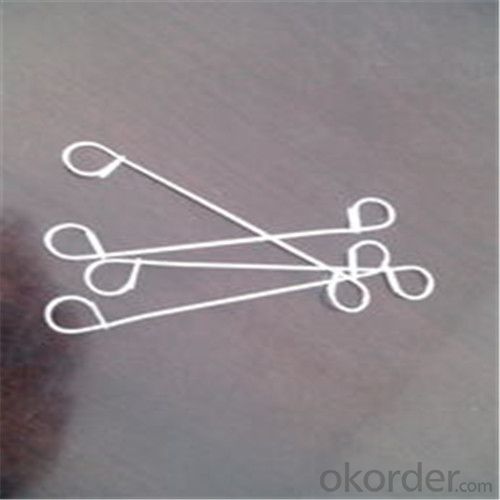
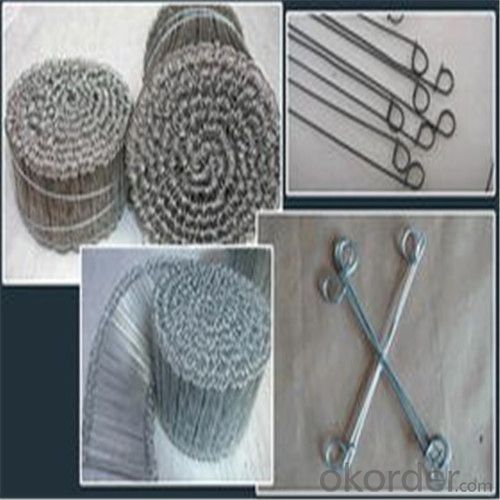
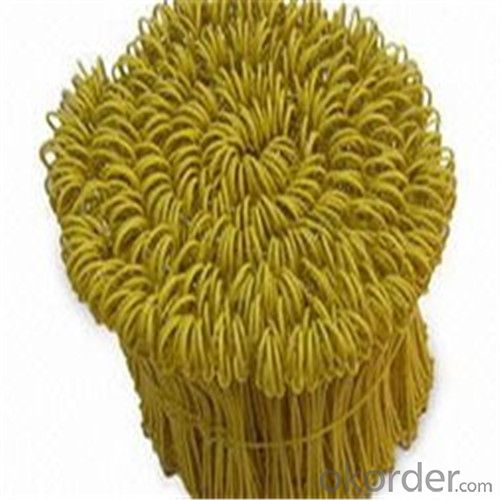
4.Looped Tie Wire Specification
Wire Gauge | SWG in mm | BWG in mm | In Metric System mm |
8# | 4.06 | 4.19 | 4.00 |
9# | 3.66 | 3.76 | |
10# | 3.25 | 3.40 | 3.50 |
11# | 2.95 | 3.05 | 3.00 |
12# | 2.64 | 2.77 | 2.80 |
13# | 2.34 | 2.41 | 2.50 |
14# | 2.03 | 2.11 | |
15# | 1.83 | 1.83 | 1.80 |
16# | 1.63 | 1.65 | 1.65 |
17# | 1.42 | 1.47 | 1.40 |
18# | 1.22 | 1.25 | 1.20 |
19# | 1.02 | 1.07 | 1.00 |
20# | 0.91 | 0.89 | 0.90 |
21# | 0.81 | 0.813 | 0.80 |
22# | 0.71 | 0.711 | 0.70 |
23# to 34# also available for galvanized iron wire. | |||
5.FAQ
We have organized several common questions for our clients,may help you sincerely:
①How about your products?
We guarantee the quality of the products. As a professional manufacture with many years of experiences, we have advanced facilities for production, and most of the products, like Loop tie wire. Annually more than 10000 tons wires and wire mesh are exported to markets all over the world. Different kinds of wires and mesh are available according to customer’s requirements all over the world.
②what is the Main Export Markets of our Loop tie wire?
Eastern Europe,North America,Mid East/Africa,Central/South America,Asia,Western Europe,Australasia
③How long can we receive the product after purchase?
In the purchase of Loop tie wire within three working days, We will arrange the factory delivery as soon as possible. The pacific time of receiving is related to the state and position of customers. Commonly 15 to 20 working days can be served.
- Q:im installing a JVC raido in my 1990 nissan maxima and cant figure out how to properly conect the wires
- The easiest way to install the head unit is to buy the harness adapter that's for your car and match the colors of the harness adapter to the head unit wiring harness. An antenna adapter will also be needed for the new head unit. A dash kit will obvious will be needed to make the installation seamless.
- Q:I have a 99 Dodge Ram.. The radio ignition wire is burnt out.. Can anyone tell me where I can connect a new ignition wire to??
- There are two hot radio wires in that ram. One is the hot all the time memory back up wire and the other is the ignition accessory switched wire. If that wire is burnt out ?? you had to have one heck of a short in the radio and a way too big of a fuse in the circuit. That circuit is fused at 3Amps and the back-up uses a 1Amp fuse. If it is the acc. switched wire to the radio that is fried, I would suspect that the audio outputs are shorted. There just is not much else in there to draw that kind of current. A new wire from the radio to the fuse block sure won't fix the problem with out clearing the short first. Any way, it just runs from the radio to the radio fuse.
- Q:I need the designations for the wires so I can splice in an amp.
- Speaker wires: left front: (+) tan (-) gray right front: (+) lt. green (-) dk. green left rear: (+) brown (-) yellow right rear: (+) dk. blue (-) lt. blue Accessory power at radio for amp turn-on: yellow (only in 2003 and older; should be located next to orange constant power wire)
- Q:coil wiring diagram
- The two small wires are positive and negative. Most are color coded and if it's a OEM part, the negative will be the same color as the group of smaller wires connected to the negative battery cable. Each manufacturer uses different color codes and for instance, Kawasaki uses black with yellow stripe. The other wire will go to the positive side. If the coil doesn't have wire coming out if it, it may have a + or - sign by the terminals. In actuality, it doesn't really matter which way you hook it up because a coil doesn't really care which way the electricity travels. It's the collapsing magnetic field that creates the spark and not the direction or movement of electricity.
- Q:i have two 12 gauge wires running from my battery to my sub amplifier, does this effectivly mean i have 6 gauges. each wire has a 15 amp fuse so does that also mean i have a 30 amp fuse?
- Funny you should say that. Since if you look closely at the grade of wire in each of the bundles of wire and compare them to a 6 gage wire bundle. 12 gage wire is a little thinner and not quite and strong and 6 gage wire is heavy and thick and really sturdy. this is so it carries the load of power better and it doesn't have many small wires that can overheat or become frayed because the bundle is stronger as a whole. Essentially by running the wires in sets of 2 different 12 gage wires you double the risk of a fire, short, or other electrical damage caused by the possibility of each or both wires becoming overloaded. 12 gage wire can only individually support a certain amount of power, and whether you double it or not you have basically violated the wires ability to have a safe current run through it as a constant. So, You better get down to the store and replace all that wire you doubled before you burn out your system, melt the wire, or torch your car.
- Q:I am installing a GFCI outlet in the kitchen (20 AMP) the box that it is already installed in has more than nine wires running into it. What I need to know is how does one determine the load wires from line wires when there are multiple wires running to an outlet box?
- if you have three romex wires coming to the box (which isn't uncommon) then each has a white, black, and bare copper ground. if you have 4 concuctor wires then there will also be a red wire too, 4 conductor wires are used to run to ceiling lights so you can use one wire but feed 2 switches like separate control for ceiling fan and light or vent fan and light for bathrooms. to determine the line vs load wires you need to take note of how everything is connected and write it down, then disconnect the wires and use a volt meter to see which black wires have power. once you do this follow it back to where you see the outer sheeting covering all three wires (white, black, and bare copper ground) in that romex wire and this is your power supply in. the rest are your load wires. as noted you should have some electrical experience to be doing this because if things aren't connected correctly it can be a fire hazard. in your case if all you are doing is swapping out a regular outlet for a gfi then its easy because all white and copper wires are common connections and connected to each other so just connect your GFI as the other outlet was connected with black as your load side and connect the ground wire to it. if you are trying to put in a gfi to also protect the rest of the outlets on that line then determine the black that has power and that goes to your load side and the rest of the blacks are fed from the load side terminal controlled through the breaker
- Q:I heard that Japanese could load a low voltage without any wires in one direction for 1 meter! Of course 1 meter is nothing. But can we get rid of wires in next 50 or 100 years?
- Yes maybe, And maybe more than maybe. because I heard about it too. I heard that they could extend it to 100 meters. So I hope it would happen(That I'm sure)!
- Q:I am replacing an outside floodlight, the cable from the house has 4 wires (black, brown, grey and yellow), but the floodlight has the standard 3 live, neutral and earth fitting. How would I wire the new floodlight.. the wiring for the old floodlight is less than a year old on a house rewire.Thanks!
- Four wire power cables used to be used for 2 and 3 phase power. You would normally provide floodlight power with the use of 3 wires. How long is the cable length from house to floodlights? I would look to see what your source wire colors are and try to match those. It used to be in the USA that the red wire was used to carry the 120/240 Volts AC (50 ~ 60~ Herz). The Black wire was considered the return or negative line; and if you have a green wire it is used to put an earth ground on all the shielding, metal jackets, etc.
- Q:i need 175ft of 110 wire how much does it cost?
- Most all of the wire used in an average home will carry 110 volts. If you're looking to install some new recepts or switches, then most likely #12 wire would work just fine. At 175', you're going to use most of a 250' roll, which is the way most residential wire is sold. A 250' roll will run about $35 - $40 depending on where you live and whether you buy it at a wholesale electrical supply house or a retail store. Buying the wire by the foot will most likely cost about the same as the price/ft. for cut wire goes up.
- Q:I need to buy more of the speaker wire my Yamaha system came with. Its very very thin almost clear wire. What is it called and where can i get it?
- Short answer is that it is called speaker wire. Most speaker wire supplied with a general-purpose audio or home theater system is 16 or 18 gauge wire (the lower the gauge number, the thicker the wire). Most general-purpose speaker wire is very inexpensive for even a 100ft spool. If you really don't know what you are looking for and just want to match what you have, the easiest thing to do is bring a small sample of your current wire to a store like RadioShack or the electrical section at Lowe's or Home Depot and match it up yourself with what they have available. Chances are you'll find a match in under a minute. You can also just order a spool of name-brand 16 gauge wire online from places like OKorder or Best Buy also.
1. Manufacturer Overview |
|
|---|---|
| Location | |
| Year Established | |
| Annual Output Value | |
| Main Markets | |
| Company Certifications | |
2. Manufacturer Certificates |
|
|---|---|
| a) Certification Name | |
| Range | |
| Reference | |
| Validity Period | |
3. Manufacturer Capability |
|
|---|---|
| a)Trade Capacity | |
| Nearest Port | |
| Export Percentage | |
| No.of Employees in Trade Department | |
| Language Spoken: | |
| b)Factory Information | |
| Factory Size: | |
| No. of Production Lines | |
| Contract Manufacturing | |
| Product Price Range | |
Send your message to us
Loop Tie Wire with Good Quality Factory Direct Lower Price Hot seller
- Loading Port:
- Shanghai
- Payment Terms:
- TT OR LC
- Min Order Qty:
- 5000 kg
- Supply Capability:
- 100000 kg/month
OKorder Service Pledge
OKorder Financial Service
Similar products
New products
Hot products
